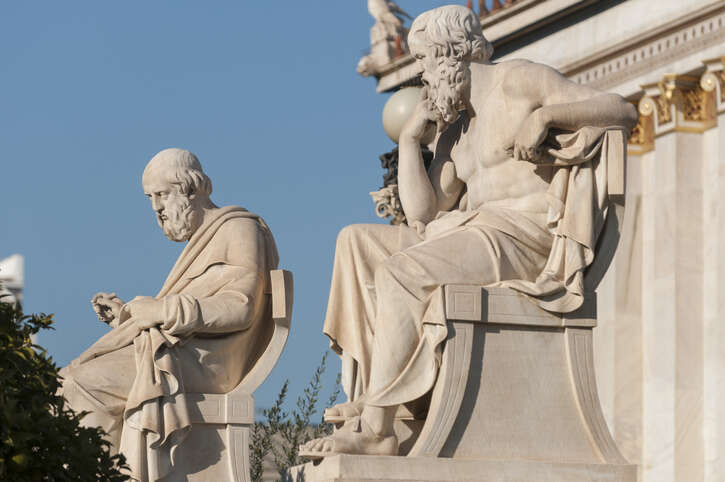
The artistic elite of the Western world has always looked kindly, not to say favorably, on inebriation. It used to be said that inebriation unleashed the creative juices and brought you closer to the gods, far away from a society where the individual counted for nothing. In some belief systems, drunkenness, never mind what happened to Noah, was a form of worship, the grapevine representing the dual nature of man, mortal and divine.
Inebriation: A form of addiction?
Today’s medical experts think otherwise. Inebriation, they say, is a form of addiction and any government that doesn’t criminalize drunkenness is failing in its duty to protect public health. But you don’t need to be a genius to understand that inebriation would not be a problem at all if everyone drank well-made wines from good producers.
Far from discouraging their consumption, the authorities should promote such wines as the perfect antidote to the tyranny of excess. Inebriation is anathema to your real wine lover because it stops them from feeling anything; it blunts those positive emotions that come from the realization that the beautiful and the good are inseparable.
For the Ancient Greeks, ethics and aesthetics were one and the same, forming the very basis of major accomplishments and inventions that shaped the history of Western civilization. The grapevine and the olive tree were thus inseparable in classical philosophy. They represented the source of all wisdom and without them there could be no prosperity—what a pity we have forgotten that today.
Wine inebriation in the banquets of antiquity
The taste of a good wine, precisely because it arouses emotion, brings to mind the banquets of antiquity. This is especially the case when the pleasure is shared with fellow lovers of philosophy—people who delight in meaningful exchanges of views between like-minded individuals.
Of course, not everyone agrees on what happened at banquets. For some, they were an excuse for over-indulgence: gorging on earthly and spiritual pleasures to the point of sensual and intellectual satiety. Banquets were a cornucopia of sensory delights, an opportunity for wanton revels as a protest against the constraints of rationality. Your ancient banqueter got drunk as a way of flouting conventional morality. Really? Socrates as represented by Plato would have been amused to hear it. I imagine him more an ascetic: a sipper but highly methodical in his approach. Or as someone given to ecstasy, when emotion reaches its climax and you finally see the connection between everything, between the reality of things in themselves and the language that shapes our perception of that reality.
Connectedness and crossover of the sense
It is no accident that taste occupies a low position within the hierarchy of the five human senses. When man went from four legs to two, primacy obviously had to be given to sight. Homo erectus needed to see danger, not just smell it. But as shown by sensory neuroscience, all five senses are connected. Taste and smell, for instance, work together to create a much richer, more complex tasting experience. Then there is the sense of connectedness that comes from the way we perceive tastes. Despite huge genetic variations in flavor perception, tasting is an experience in sharing and learning. Before ever a sensory impression reaches conscious awareness, it is translated into analogous words or images retained in the sensory register—the memory store that holds information from the five senses. This crossover in the senses, or synaesthesia, is the only means by which taste sensations are transmitted to the brain. And it is precisely what doesn’t happen in a state of inebriation, when fine distinctions—distinctions of any kind really—get lost. Not to mention tuning into your senses.
Anthropomorphic pleasures and the desirability of the rare
I have always felt drawn to people who resort to anthropomorphism to communicate the effect produced on them by wine. Take, for instance, Burgundy’s Grande Dame, Lalou Bize-Leroy. Today her wines and vineyards are “people”—flesh-and-blood people with unique personalities whom she describes with all the ebullience of a football fan commenting on the performance of a local footballer. But wind the clock back 20 years and her now much-revered Romanée-Saint-Vivant Grand Cru was a “hetaera” or a “mermaid”—said with a wink to husband Marcel.
Personalizing a cru, putting it on stage, so to speak, appeals to our sensibilities and gets us reaching for our wallets. It creates a ranking that has repercussions on the sale price, which in turn determines the reputation of the wine. The rarer the wine, the more expensive; the more expensive the wine, the more desirable. Such is business, and most particularly the luxury business whose trends shape the refinement of taste and our culture as a whole.
But we owe it to ourselves to resist those trends that reject any idea of rankings—whether of sensations, tastes, or prices. However seductive in their simplicity, what they reflect is shallow thinking that oversimplifies everything. The road to Hell, as we know to our cost, is paved with good intentions.






